October marks a significant transition in Tucson’s gardening calendar. As the intense summer heat wanes and the monsoon season wraps up, October presents an ideal opportunity for planting cool-season crops. Tucson’s unique high-desert climate means that winter months are mild enough to sustain many plants that would struggle in colder regions. Gardeners can take full advantage of these mild conditions to plant both ornamental annuals and herbs that will thrive from fall through spring.
Why Annuals and Herbs Are Ideal for Cool-Season Gardening
Annual flowers and herbs are excellent choices for Tucson’s October gardens. Many annuals are frost-tolerant, and the mild desert winters allow these plants to flourish with minimal care. Herbs such as cilantro and parsley thrive in cooler temperatures, making them perfect for fall and winter planting. The cool season in Tucson typically runs from October to March, and with careful planning, you can enjoy fresh flowers and herbs for several months. The mild weather also makes watering much more manageable during the cool season.
Top Annual Flowers for Tucson’s Cool Season
Annual flowers add vibrant color to your garden and are relatively easy to care for. Here are some of the best options for Tucson’s cool season:
Snapdragons (Antirrhinum majus)
Snapdragons are a cool-season favorite in Tucson due to their ability to withstand light frost. They come in a wide range of colors and grow well in garden beds and containers. Plant snapdragons in October for blooms that last through winter.
- Height: 12 to 36 inches
- Sunlight: Full sun to partial shade
- Watering: Moderate, allowing soil to dry between watering
Pansies (Viola x wittrockiana)
Pansies are another excellent choice for Tucson’s cool season. These flowers thrive in cooler temperatures and can handle light frosts, making them perfect for fall planting. They also provide a variety of color options, adding brightness to your winter garden.
- Height: 6 to 9 inches
- Sunlight: Full sun to partial shade
- Watering: Regular watering to keep soil moist
Calendula (Calendula officinalis)
Also known as pot marigold, calendula is a hardy annual that produces bright yellow and orange flowers. In Tucson, calendula can be planted in October and will bloom throughout the cooler months.
- Height: 12 to 24 inches
- Sunlight: Full sun
- Watering: Moderate, prefers well-draining soil
Stock (Matthiola incana)
Stock flowers are known for their delightful fragrance and beautiful clusters of blooms. They thrive in cooler weather and can be planted in October for blooms that last through the winter.
- Height: 12 to 30 inches
- Sunlight: Full sun to partial shade
- Watering: Regular, keeping soil evenly moist
Sweet Alyssum (Lobularia maritima)
Sweet Alyssum is a low-growing annual with small, fragrant flowers. It’s an excellent choice for borders and garden edges. The plant is tolerant of light frost and will grow well in Tucson’s cool-season climate.
- Height: 4 to 8 inches
- Sunlight: Full sun to partial shade
- Watering: Moderate, prefers well-drained soil
Geraniums (Pelargonium spp.)
Geraniums are a popular choice in Tucson for adding color to garden beds or containers during the cooler months. Protect from frost and give them plenty of sunshine for a long bloom season.
- Height: 12 to 24 inches
- Sunlight: Full sun
- Watering: Moderate
Dianthus (Dianthus spp.)
Dianthus produces fragrant, fringed flowers in a variety of colors and prefers cool weather. It acts as a perennial in many situations, and is tolerant of alkaline soil.
- Height: 6 to 12 inches
- Sunlight: Full sun to partial shade
- Watering: Regular
Lobelia (Lobelia erinus)
Lobelia’s cascading blooms of blue, purple, or white make it ideal for hanging baskets or borders in Tucson’s cool season. With nonstop blooms and the ability to bloom in heavy shade make it a great addition for cool season color.
- Height: 4 to 9 inches
- Sunlight: Full sun to partial shade
- Watering: Regular
Marigold (Tagetes spp.)
While often considered a warm-season plant, many varieties of marigold thrive in Tucson’s mild winters with protection from frost. Consistent deadheading will ensure a long bloom season and prevents the plant from becoming leggy.
- Height: 6 to 36 inches
- Sunlight: Full sun
- Watering: Moderate
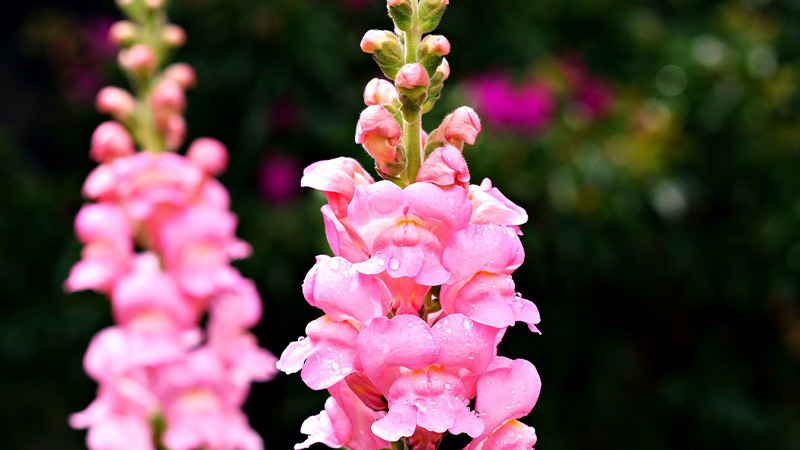
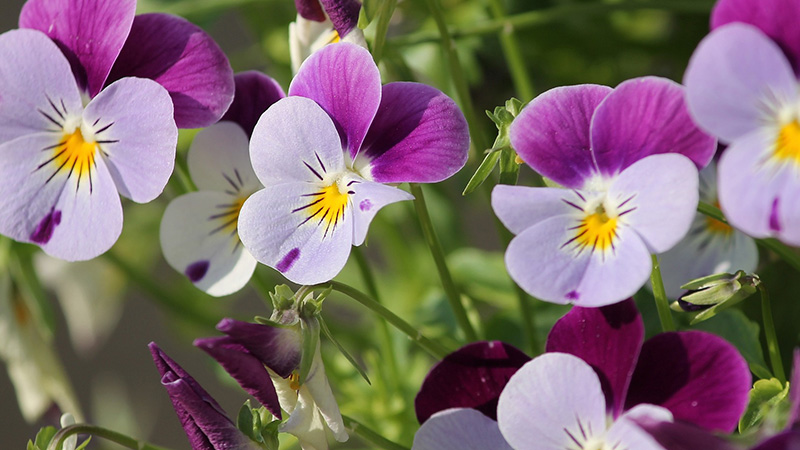

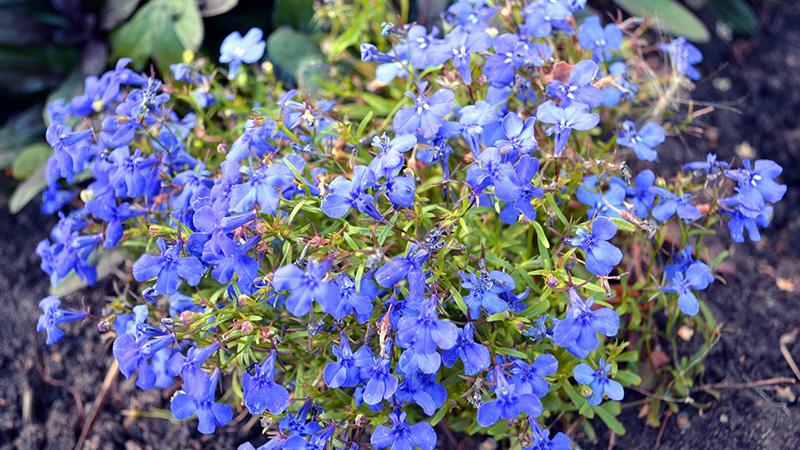
Best Herbs for Tucson’s Cool Season
Cool-season herbs are perfect for Tucson’s October gardens, adding fresh flavors to your kitchen and thriving in the milder weather. Here are the top herbs to consider:
Cilantro (Coriandrum sativum)
Cilantro thrives in cooler temperatures, making it a top choice for fall planting in Tucson. This fast-growing herb adds bright flavors to salads, salsas, and other dishes.
- Sunlight: Full sun to partial shade
- Watering: Regular, keep soil consistently moist
- Harvest: Harvest leaves once they reach 4-6 inches
Parsley (Petroselinum crispum)
Parsley is another cool-season herb that grows well in Tucson’s fall and winter conditions. It’s a versatile herb that’s great in soups, salads, and sauces. Parsley also looks great mixed into annual flower pot arrangements.
- Sunlight: Full sun to partial shade
- Watering: Regular, keeping soil moist
- Harvest: Pick leaves as needed, starting from the outer edges
Dill (Anethum graveolens)
Dill is a hardy herb that loves cool temperatures and grows well in Tucson’s fall season. It’s perfect for flavoring pickles, soups, and fish dishes.
- Sunlight: Full sun
- Watering: Moderate, ensuring soil is well-drained
- Harvest: Harvest leaves once plants are about 12 inches tall
Mint (Mentha spp.)
Mint is a vigorous grower, and its cool-season growth in Tucson ensures a fresh supply for teas, salads, and desserts. Keep it contained to prevent it from spreading too much.
- Sunlight: Full sun to partial shade
- Watering: Regular, keep soil moist but not waterlogged
- Harvest: Harvest leaves regularly to encourage more growth
Sage (Salvia officinalis)
Sage is a perennial herb, but it can be planted as an annual in Tucson’s cool season. It grows well in the desert climate, adding earthy flavors to meats, stuffing, and soups.
- Sunlight: Full sun
- Watering: Moderate, allowing soil to dry between watering
- Harvest: Pick leaves as needed, but avoid cutting back more than one-third of the plant at a time
Thyme (Thymus vulgaris)
Thyme is a low-growing, aromatic herb that thrives in cooler weather and tolerates Tucson’s dry climate.
- Sunlight: Full sun
- Watering: Moderate
- Harvest: Trim stems regularly
Oregano (Origanum vulgare)
Oregano is a perennial herb that does well as an annual in Tucson’s fall and winter, adding flavor to Italian and Mediterranean dishes.
- Sunlight: Full sun
- Watering: Moderate
- Harvest: Snip leaves as needed
Chervil (Anthriscus cerefolium)
Chervil, a cool-weather herb, is perfect for adding a mild anise flavor to salads and soups.
- Sunlight: Partial shade
- Watering: Regular
- Harvest: Harvest young leaves for best flavor
Chives (Allium schoenoprasum)
Chives are resilient to cool temperatures, making them ideal for Tucson’s fall gardening. They add a mild onion flavor to a variety of dishes.
- Sunlight: Full sun
- Watering: Regular
- Harvest: Cut leaves as needed
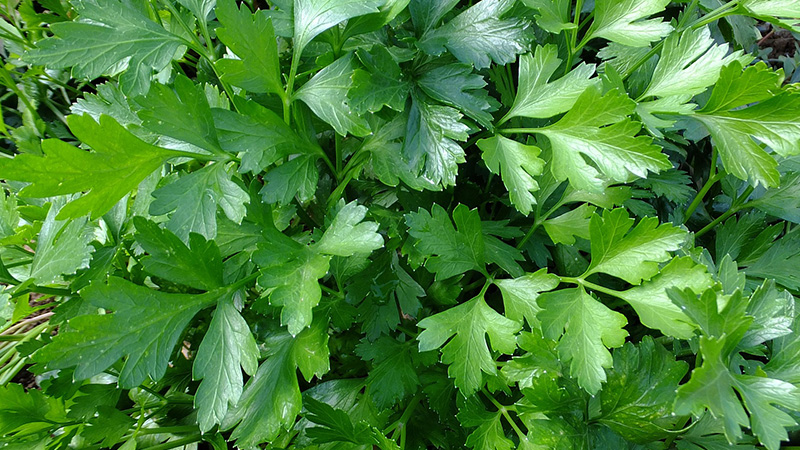

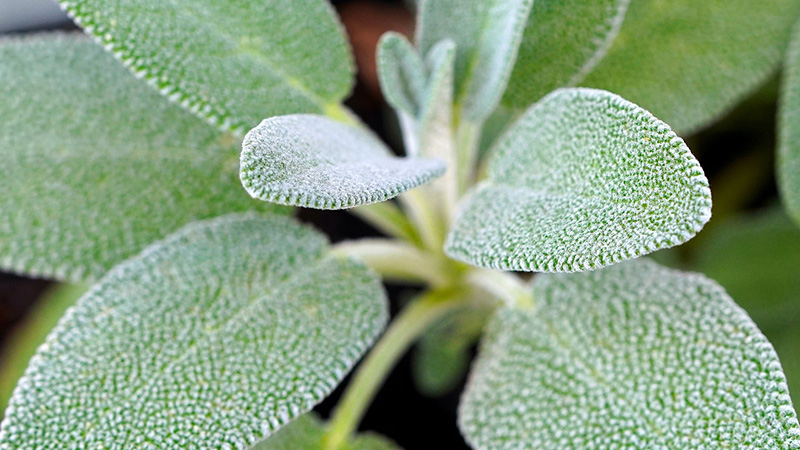
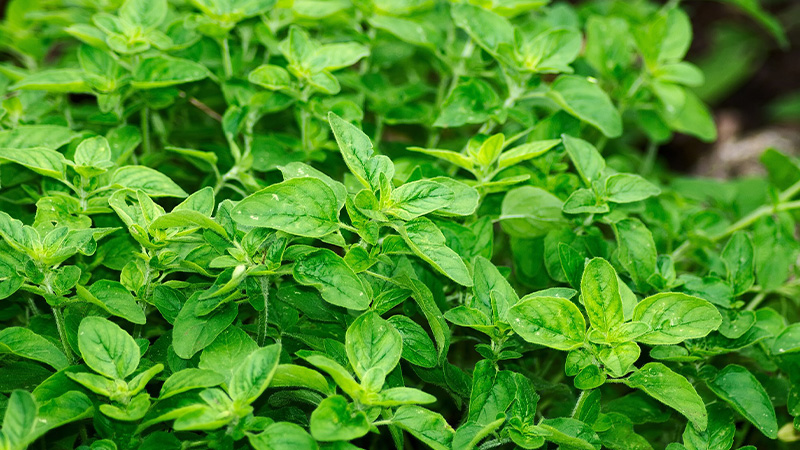

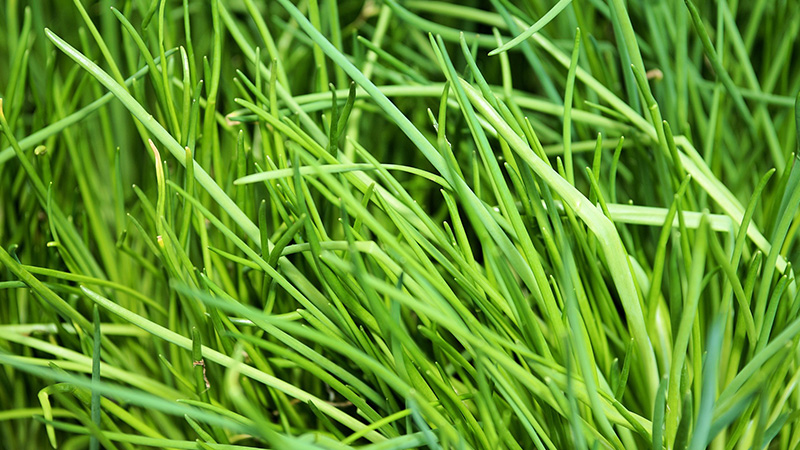
Caring for Your Cool-Season Garden
Watering and Fertilization
Cool-season plants require regular watering, but be careful not to overwater. Most annuals and herbs prefer slightly moist soil, but the top layer should dry out between watering. Fertilize with a balanced, slow-release fertilizer once a month.
Pruning and Deadheading
Remove dead or spent flowers regularly to encourage new blooms in annuals. For herbs, prune regularly to promote bushier growth and prevent flowering, which can cause herbs to lose flavor.
Pest Management
Common pests during the cool season include aphids and whiteflies. Use insecticidal soap or neem oil to manage infestations. Keep an eye out for snails and slugs, which can be active during cooler months.
Harvesting
Cool-season herbs can be harvested throughout the winter. Snip the outer leaves of parsley, cilantro, and dill as needed, allowing the inner leaves to continue growing. Sage and mint can be harvested in small amounts, but always leave enough of the plant intact to promote further growth.
October in Tucson is a prime time for planting cool-season annuals and herbs. With careful planning and attention to soil, water, and frost protection, your garden will flourish throughout the fall and winter months. Whether you’re growing snapdragons for color or cilantro for your kitchen, Tucson’s mild desert climate offers a wonderful opportunity for cool-season gardening.